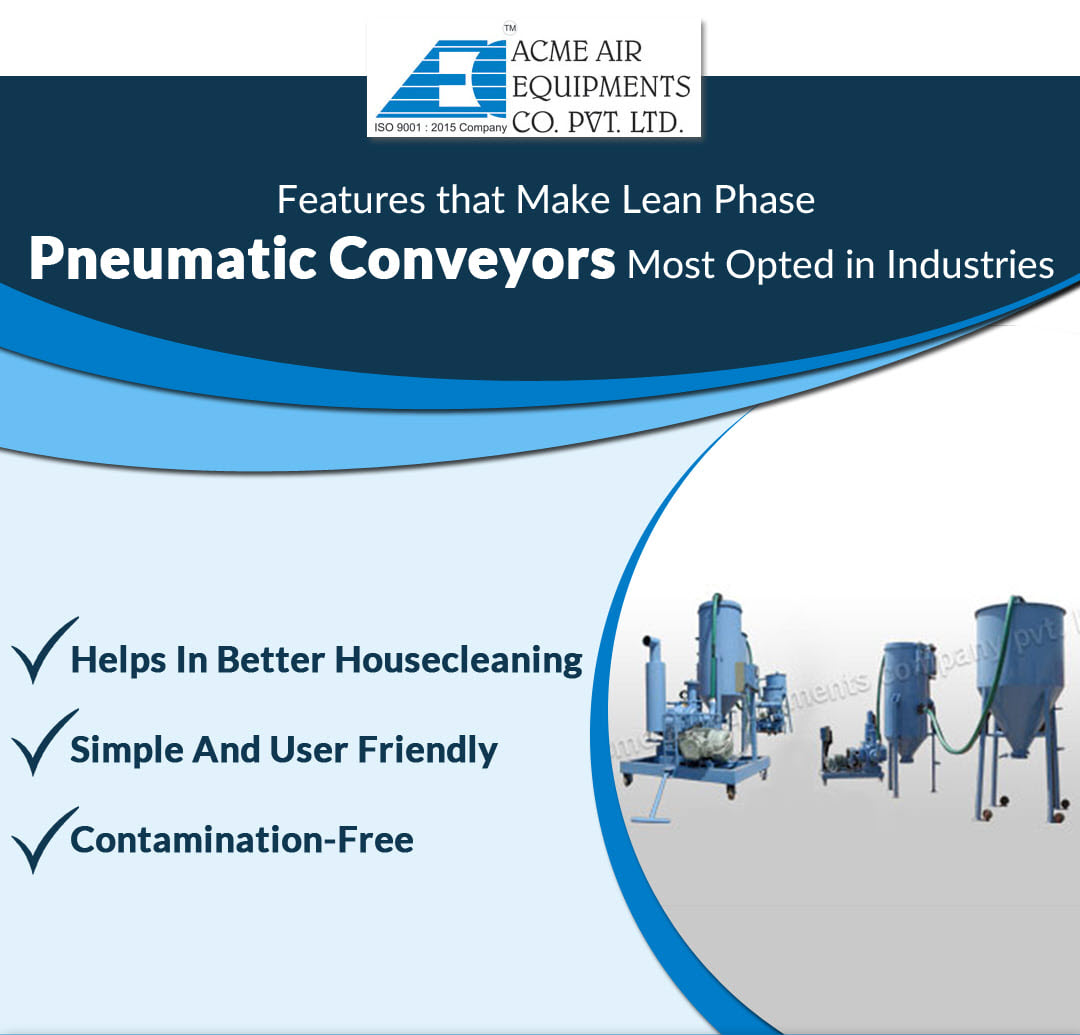Table of Contents
A Pneumatic Conveying System is used to transport materials in an industrial setting. There are several parts of this system. These include a diverter valve and a filter receiver. The diverter valve prevents contamination and provides line switching. The diverter valves are made of cast iron, stainless steel, and aluminium and are sealed with polyurethane rubber. The filter receivers are shaped like a parabolic sphere and trap dust and other airborne materials.
What is Dilute Phase Pneumatic Conveying System?
When considering a pneumatic conveying system, there are two basic types: the Dense Phase and the Dilute Phase. Both are used in varying conditions in plants. The difference between the two is in the amount of gas that can flow in each. The Dense Phase is more likely to have high pressures, which will cause excessive line vibrations. The Dilute Phase of pneumatic conveying systems is usually less dense than their Dense counterparts.
The two types of conveying systems require different air pressures. For example, a high-pressure, dense phase conveying system is less energy-efficient than a lower-pressure, dilute phase system. However, both conveying systems require similar air pressures and will not produce a significant amount of dust. For this reason, it is important to consider the composition of the material and distance. The Dilute Phase conveying system may be more appropriate for certain applications, but is not always the most economical option.
What is Dense Phase Pneumatic Conveying System?
A Pneumatic conveying system for dense phase is typically comprised of two parts: a pressure vessel and a pipeline. The former introduces bulk solids into a pipeline, while the latter sends them on to production. The former involves a pump with a high pressure and requires a pressure transmitter. The two parts are similar in design, and they both utilize pneumatic pressure to move the bulk solids.
A dense phase pneumatic conveying system is a great choice when fine powders require smooth flow. The pneumatic transporter cone helps swirl the powder into the conveyer vessel, minimizing bridging. Short conveying lines can make dense phase systems a very efficient solution for materials such as calcium carbonate or some types of soda ash.
What are Rotary Valves in Pneumatic Conveying System?
There are two primary types of rotary valves: open-end and closed-end. The latter are better suited for materials that flow quickly and are not too heavy. Open-ended valves can withstand a wider range of flow conditions. Open-end valves may be prone to damage from excessive air leakage. The number of vanes varies depending on the material and flow rate. A professional can help you determine which type of valve is best suited for your particular application.
Blow-through rotary valves don’t have a bottom outlet flange. The material feeds into the inlet, passes through the rotor vanes, and drops out the bottom outlet flange. Drop-through valves are versatile, and can be used for a variety of pneumatic conveying systems. A convey adapter must be installed below the valve to transfer the product into the conveying line.
What is Single-phase Flow in Pneumatic Conveying System?
In Single-phase Flow in Pneumatic Conveying System the pressure drop in the line varies with the distance and velocity of the material being conveyed. The flow is typically a slurry. As the material progresses down the line, the pressure decreases, causing an increase in velocity. However, at higher speeds, particle attrition and erosion may be issues.
Pneumatic conveying systems are commonly classified into single-phase and dual-phase systems, depending on the solids flow pattern and conveying distance. In the former, the dense phase represents high energy cost, while the dilute phase contains relatively low energy. The higher particle velocities and high volume of the dilute phase are undesirable characteristics. As a result, the design of the system must take into account these features to get the desired system performance.
What is Multi-phase Flow in Pneumatic Conveying System?
A multi-phase flow with pneumatic conveying system is used to transport solids and liquids over long distances. This type of conveying system has various characteristics that allow for it to be customized for specific applications. The main differences between dilute and dense phase systems are the air pressure and solids loading ratio. In addition, the system is also designed to accommodate any size of product or pipe, so it can be used in many different applications.
When using a pneumatic conveying system, it is vital to design the system properly. There are many common mistakes that can cause a pneumatic conveying system to malfunction, including premature line plugging, excessive saltation velocity, and too many bends. Another mistake is to use upward-inclined conveying lines and to place back-to-back bends in the system, which may slow the material in the second elbow.

What is the Cost of Pneumatic Conveying System?
Pneumatic conveying systems are an excellent way to improve productivity while reducing costs. Not only are they more flexible and efficient, they solve a number of hygiene and safety concerns. A pneumatic system also eliminates product contamination, a common problem with manual methods.
The Bottom Line
A pneumatic conveying system is the most economical when it has a high material-to-air ratio and minimum speed. These characteristics reduce energy consumption, while minimizing wear and tear on the conveying pipe. And a Pneumatic conveying experts can help you choose a suitable system and the most effective components.



